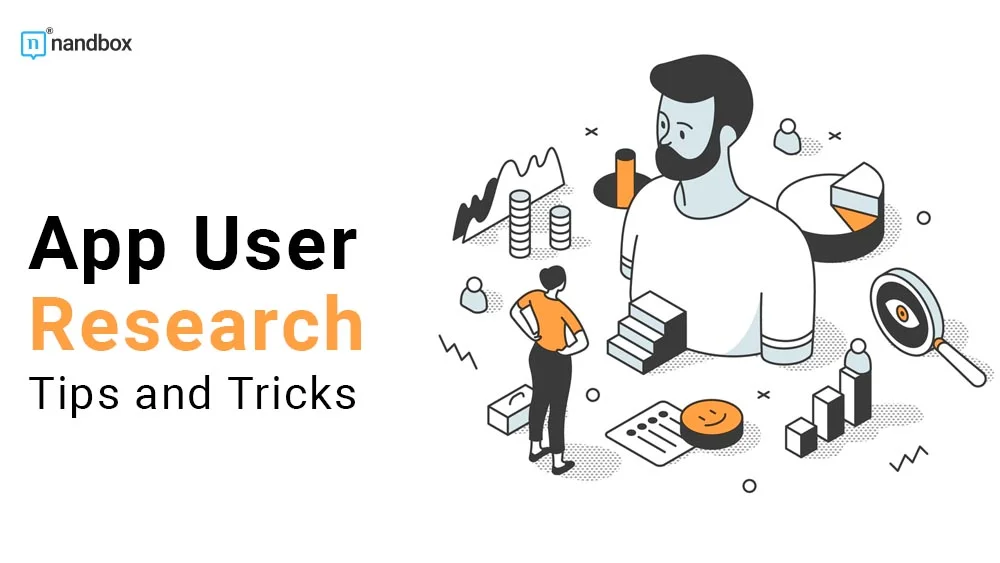Essential Tips and Strategies for App User Research
Browsing different screens at once creates little attention and reduces the focusing rate of any app consumer. When this happens, businesses have to meet the needs of their customers right away or risk losing them. You have the option to do that with the aid of UX research. What does it take to carry out effective user research, then? We will be answering this in addition to providing you with tips and tricks from app user research.
App user research gives developers useful information about the user experience. It also helps them make a design that is focused on the user and is the foundation of a great user experience. User research has grown even more important as we go from the age of digital immigrants to that of digital natives. Dive in with us to see how to conduct successful app user research.
Define Your Objectives Prior to Starting
Setting defined goals is the first step in conducting good app-user research. Start by putting your motivation for conducting research and your goals on paper.
Setting a clear goal at the start will help you choose the research methods you will use, the topics you will discuss with users, and the ways it will help you find useful information. Let’s say, for example, that you want to know why your app visitors leave their shopping carts empty. Your app user research goals could be:
- Learn why a user added a product to their cart.
- Track down the reasons customers leave their carts empty after adding items to them.
- Determine what changes you may make to encourage users to complete the purchase by first understanding the problems they experience during the transaction.
Conducting user research with your primary objectives and goals in mind will help you avoid wasting time and money.
Understand Your Target Audience
The first step in conducting effective app user research is to understand your target audience. Who are they? What are their needs and pain points? What motivates them to use your app? By answering these questions, you can create user personas that represent your target audience. These personas will help guide your research and ensure that you’re gathering feedback from the right people. You can use a variety of methods to create user personas, including surveys, interviews, and focus groups. You can check out our article about leveraging user tagging and segmentation to dive into more details.
Discover How to Properly Moderate Remote User Interviews
Even the best interview moderators in person might find it hard to learn how to do remote interviews well. Your trials might be interrupted by a variety of issues, such as connection problems or audio problems, so you should check and be ready for anything beforehand.
Close everything but your moderation guide and the application you use to connect with your users if you want to conduct a fantastic remote user interview. Try not to do too many things at once, because even a small interruption can make it hard to talk to your users.
No multitasking also means no taking notes, as this could divert the user as well as you. It might be more difficult for you to establish a rapport with them if you frequently break eye contact, which is already more difficult in a distant interview.
Finally, once the conversation starts, talk clearly and slowly to give the participant time to process your questions. When you are not physically present, even with the best connection and technologies, there is a small amount of cognitive latency, making it simpler to interrupt or talk over other people.
User surveys and interviews are two of the most important ways to get feedback from your target audience. Surveys can be sent to a large number of users and can provide valuable quantitative data, while interviews can provide more in-depth qualitative feedback. When conducting surveys and interviews, it’s important to ask open-ended questions that allow users to provide detailed responses. Also, you might want to think about giving users discounts or free premium features to get them to join. This will increase participation rates and provide more comprehensive feedback.
Analyze User Behavior with Analytics Tools
Analytics tools are a crucial component of app user research. They allow you to track user behavior within your app, such as which features are most popular and where users are dropping off. This information can help you find places to improve and make decisions about future changes based on data. Popular analytics tools for app user research include Google Analytics, Mixpanel, and Flurry Analytics. Be sure to set up tracking early on in the development process to ensure you have enough data to make informed decisions.
Choose Your App User Research Method in a Thorough Way
User research can be roughly divided into qualitative and quantitative categories. Methods for qualitative research include usability testing, focus groups, interviews, diary studies, and workshops where people can take part in making the designs. Quantitative research methods include online polls, surveys, and questionnaires. To guarantee that the results are useful, you must choose the research methodology based on the scope and nature of the project.
Using qualitative research methods, for instance, will help you understand why your users behave the way they do. That is, since they reveal the rationale behind their actions. But quantitative methods can be your best bet if you want to comprehend your users. Here we’re talking in terms of percentages and statistics. In other words, try to grasp the issue you’re attempting to address and the queries you need to address before choosing a research methodology. This will enable you to choose the approach that will most benefit you in achieving your goals.
Test Your App with User Testing
User testing is a crucial step in-app user research. It involves watching real people use your app and getting feedback on how they feel about it. This can help you identify usability issues, confusing features, and areas for improvement. User testing can be done in a lot of different ways. These ways could be through in-person sessions, remote testing, or automated testing. Consider your budget and timeline when choosing a method. Also, be sure to recruit a diverse group of users to get a well-rounded perspective.
Continuously Iterate and Improve Your App
App user research is not a one-time event. It’s important to continuously iterate and improve your app based on user feedback. This means that user testing, user data analysis, and making changes to improve the user experience should be done on a regular basis. Keep an open mind and be willing to make changes, even if it means scrapping features that you thought were great. Remember, the ultimate goal is to create an app that users love and will continue to use.
To Wrap It Up
Sometimes you feel like you might have the perfect business app idea, but you can’t actually bring it to life. This is where a native no-code app builder will be the perfect solution for you. With nandbox’s native no-code app builder, you can build flawless applications with a seamless experience in a matter of minutes! With our easy layout and our drag-and-drop feature addition method, there is nothing you can’t do. Sign up for our app builder now and enjoy our 14-day free trial to be able to familiarize yourself with the navigation process and have good insight into the modules we provide you with.
With various ways and methods to conduct successful app user research, you are left with one obligatory thing: to always be up to date. As technology is evolving daily, so is everything in our lives. This is why it is crucial for any app developer to be updated with trendy techniques and with everything new to the market when it comes to their app’s user research. That is, in order for them to conduct one that will be a huge factor in their app’s success.






